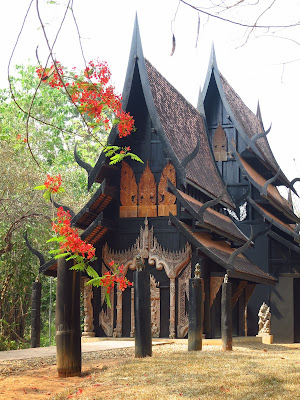-Arthur at Cocoa Mews in Penang, for
storing our stuff for us and keeping it safe
-The First Aid Team at the beach on
Langkawi for tending to my injured foot
-Heppy (a.k.a Happy-Happy) for renting
us our first motor bike
-The girl at The Nutmeg Factory for the
awesome tour
-Sam and his wonderful staff at Sam's
Bungalow in Bukit Lawang
-Our jungle guide in Sumatra—who's
name we never could pronounce—for having such a knack for spotting
those primates!
-The Batak band on Samosir Island for
the fantastic show
-Michael, from Switzerland, for his
great company at Sky Bar in Bangkok
-Beth, for being such a wonderful host
and friend to us in Pai
-Julie, from Beligium, for keeping us
company and sharing her smiles
-Alicia and Sam, for reminding us what
it's like to have a “double date”
-Haley and Dave, for reminding us of our
mutual hometown
-Noy, Nui, Dustin, Su, Mahelio, Portia,
Sandy, Otto, Cindy, Sara, Chenua, Jauquin, Agata, Christin, Lauren
and the rest of the gang in Pai for all the great times!
-Mr. T. for hosting us during Song Kran
and for some of the best Karaoke this side of the Pacific
-Lek, for teaching us how to cook like
real Thais
-Muay, for being our tour guide and our
friend in Chiang Rai
-Damaris, Oou, Quan, and the rest of the
staff at Khom Loy for all of their help and support
-Paul and Patricia, for their gracious
hospitality and for all the fun times (especially at Cat Bar!)
-Lynn and Jane, from Australia, for the
laughs and the inspiration to keep traveling
-Mandy, for her warmness and for the
thoughtful birthday gift
-Gioia and Amber for their lovely
company and good conversation
We are in constant awe of the amazing
people we've met throughout our journey. Each of you helped to make
our time on this beautiful continent meaningful, memorable and fun.
For that, we will forever be grateful. Though the places we've
visited this past year have been among the most beautiful we've seen,
and each experience unique, it's the human connections that make
traveling the incredible experience it is. As we leave the trip
behind, we look forward to maintaining many of the new connections
that we've made abroad and to nurturing those that we treasure at
home. As always, we want to thank our friends and family for their
continued love and support throughout the trip, and beyond...
We're coming HOME!






















